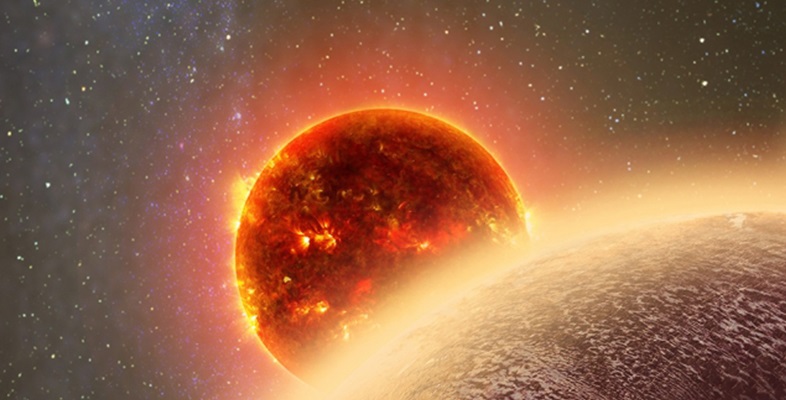4.1 Transit depth gives size
Last week you learned how to interpret transit light curves. By measuring the brightness of the star before and during the transit you can work out how much starlight is blocked by the planet, and therefore the relative sizes of the planet and the star. What you measure directly is the transit depth – the fractional amount of light missing (usually expressed as a percentage). Last week we worked out that the transit depth reveals the ratio of cross-sectional areas for the planet and the star, which is the same as the squared ratio of the planetary and stellar radii:
We’ll briefly revisit the interactive application from last week that calculates transit depths for us and then you will be invited to have a go at using Equation 1 for yourself.
Activity _unit6.4.1 Activity 1 The transit depth of a familiar planet
Using this interactive application, set Rstar = 1.00 RSun and Rplanet = 1.00 RJ. You can also use the arrow keys on the keyboard to amend the values.
1. To which familiar planet do these sizes correspond?
Answer
These sizes are those of Jupiter and its star, the Sun.
2. What transit depth would an extraterrestrial astronomer see if they measured the brightness of the Sun while Jupiter passes exactly between them and the Sun?
(Remember that the transit depth is usually expressed as a percentage of starlight blocked.)
Answer
If Jupiter passes exactly between the Sun and the extraterrestrial astronomer then the orbital inclination is i = 90°. According to the interactive application this gives a transit depth of 1.05%. If you estimated it from the graph you probably said 1%.
Note that the orbital period of Jupiter is very different from the value indicated, but for working out the transit depth it is only the size ratio that matters. Equation 1 tells you the transit depth depends only on the two radii.
In Activity 1 you saw that Jupiter’s transit depth is about 1%. You can generalise this to say any Jupiter-sized planet orbiting a Sun-sized star will produce a transit depth of about 1%.
